Intel Rocket Lake (14nm) Review: Core i9-11900K, Core i7-11700K, and Core i5-11600K
by Dr. Ian Cutress on March 30, 2021 10:03 AM EST- Posted in
- CPUs
- Intel
- LGA1200
- 11th Gen
- Rocket Lake
- Z590
- B560
- Core i9-11900K
Gaming Tests: Final Fantasy XV
Upon arriving to PC, Final Fantasy XV: Windows Edition was given a graphical overhaul as it was ported over from console. As a fantasy RPG with a long history, the fruits of Square-Enix’s successful partnership with NVIDIA are on display. The game uses the internal Luminous Engine, and as with other Final Fantasy games, pushes the imagination of what we can do with the hardware underneath us. To that end, FFXV was one of the first games to promote the use of ‘video game landscape photography’, due in part to the extensive detail even at long range but also with the integration of NVIDIA’s Ansel software, that allowed for super-resolution imagery and post-processing effects to be applied.
In preparation for the launch of the game, Square Enix opted to release a standalone benchmark. Using the Final Fantasy XV standalone benchmark gives us a lengthy standardized sequence to record, although it should be noted that its heavy use of NVIDIA technology means that the Maximum setting has problems - it renders items off screen. To get around this, we use the standard preset which does not have these issues. We use the following settings:
- 720p Standard, 1080p Standard, 4K Standard, 8K Standard
For automation, the title accepts command line inputs for both resolution and settings, and then auto-quits when finished. As with the other benchmarks, we do as many runs until 10 minutes per resolution/setting combination has passed, and then take averages. Realistically, because of the length of this test, this equates to two runs per setting.
| AnandTech | Low Resolution Low Quality |
Medium Resolution Low Quality |
High Resolution Low Quality |
Medium Resolution Max Quality |
| Average FPS | 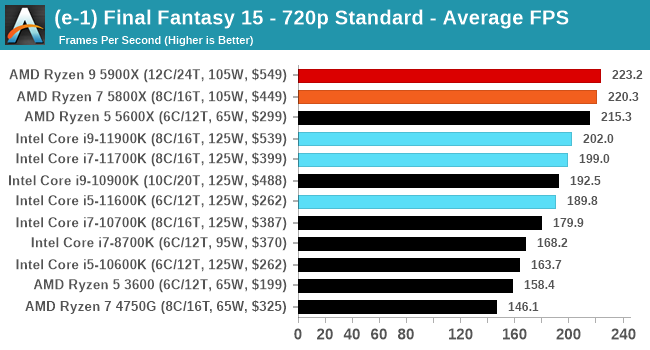 |
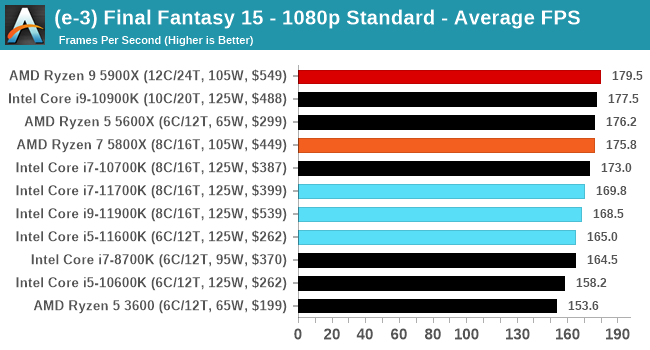 |
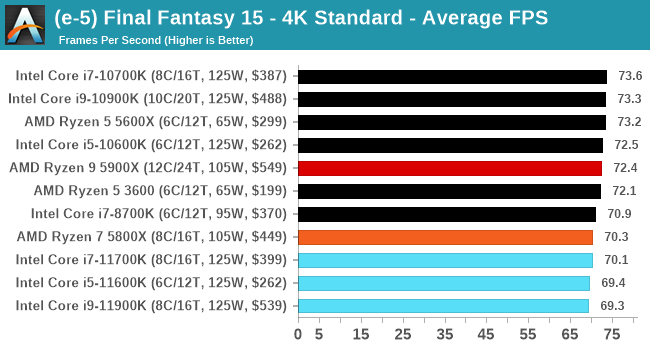 |
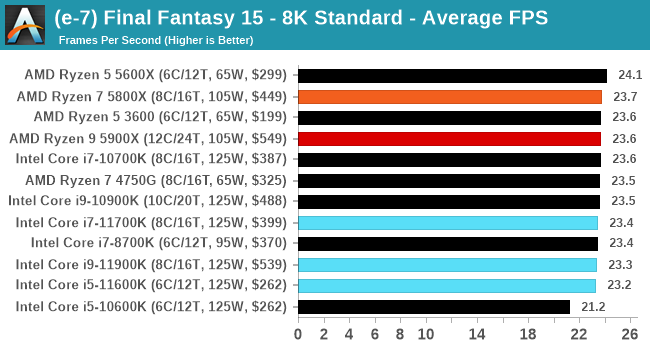 |
| 95th Percentile | 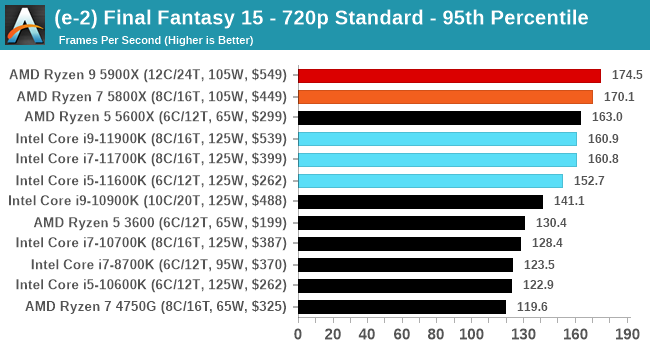 |
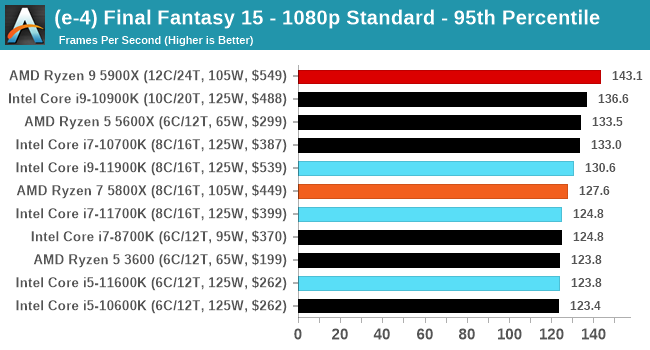 |
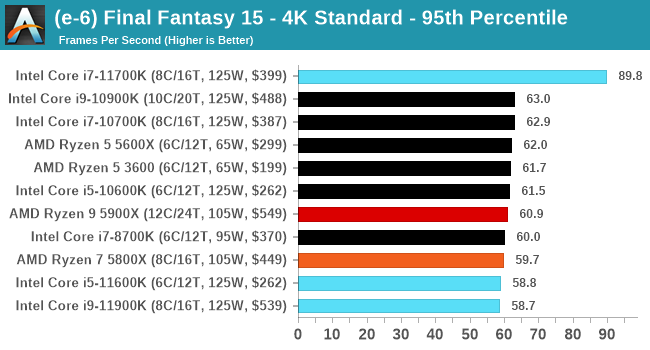 |
 |
All of our benchmark results can also be found in our benchmark engine, Bench.












279 Comments
View All Comments
Oxford Guy - Saturday, April 3, 2021 - link
It’s clearly sarcasm. The Turing stuff, which was a poor value even before this latest mining fiasco is very expensive at its top end — putting it quite outside the budget of a lot of people — that is if they could even get their hands on one in the first place.Qasar - Wednesday, March 31, 2021 - link
maybe you should stop whining and just leave if AT makes you this unhappy, and angry, oxford guyOxford Guy - Thursday, April 1, 2021 - link
When this becomes your personal website then you can decide who is to be censored and who is not. Until then, keep your comments relevant.Qasar - Thursday, April 1, 2021 - link
right after you doOxford Guy - Saturday, April 3, 2021 - link
And look up the tu quoque fallacy.Qasar - Saturday, April 3, 2021 - link
whining and complaining is still the same, no matter how you look at it, again, if this site makes you that unhappy and angry, due to the way they test and review products, then why do you keep coming here ?zamroni - Tuesday, March 30, 2021 - link
it's should be called rocket lame.it runs hot like rocket too
SkyBill40 - Tuesday, March 30, 2021 - link
Tech Jesus said it best and most bluntly: A waste of silicon.SystemsBuilder - Tuesday, March 30, 2021 - link
Ian,your writing about how "hard" AVX-512 is to program was fine in the first article and maybe even in the second article you wrote, but you keep on repeating the exact same sentence (paragraph) on how hard AVX-512 is to program and keep on quoting Jim Keller: "there are only a couple dozen or so people who understand how to extract the best performance ...".
That was a while ago and I can assure you there are plenty of people who know how to do this now. It's assembly and any CS/CE major graduate worth their salt, with linear algebra (vector calculus also helps), advanced computer architecture and a serious parallel programming class would know how to do that with some work.
AVX-512 is not mysterious or strange, it's just vectors math + vectorization of normal scalar operations on configurable 512 bit vectors. Yes you do need to vectorize your algorithms from the ground up because you cannot rely on compilers to vectorize your old sequential scalar algorithms for you (they'll do some attempts, but will disappoint), and you do need to write some code in either assembly directly or using intrinsic, as well as understand pipeline and scheduling of the AVX-512 instructions and the dependencies (there are tools to help you with this too), BUT it's not harder than that. It's not magic. It’s just normal solid Computer Science work. Can you please change the narrative on AVX-512 hardness because I think it is just misleading today 2021, having been available in mainstream CPUs since Skylake-X was released. Thx.
Hifihedgehog - Tuesday, March 30, 2021 - link
Haha. No. Ian is absolutely right and big names in the industry (like Linus Torvalds) are mostly in agreement on this too: AVX-512 hides the the warts of the underlying performance discrepancies of their hardware when doing general everyday compute.